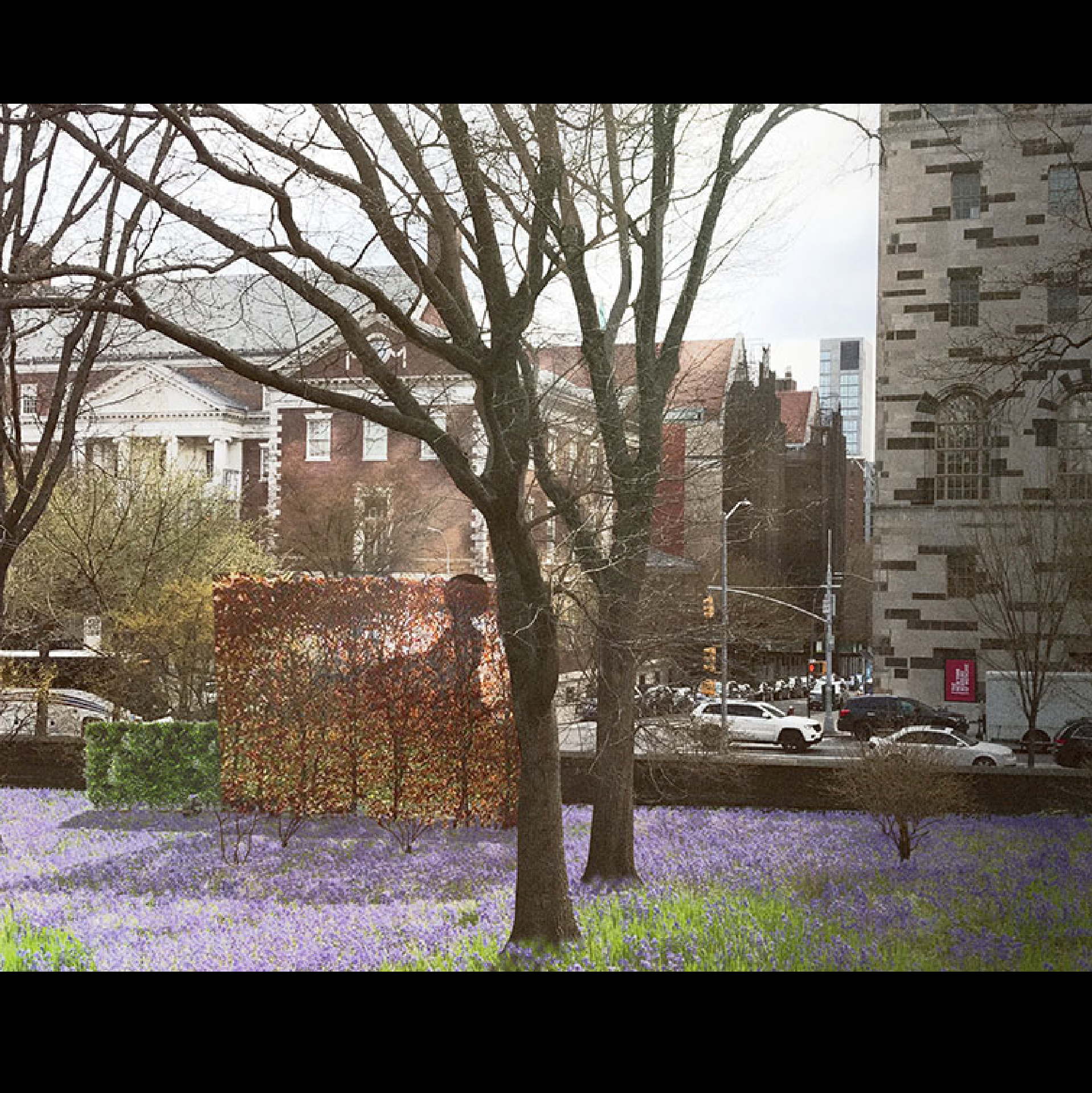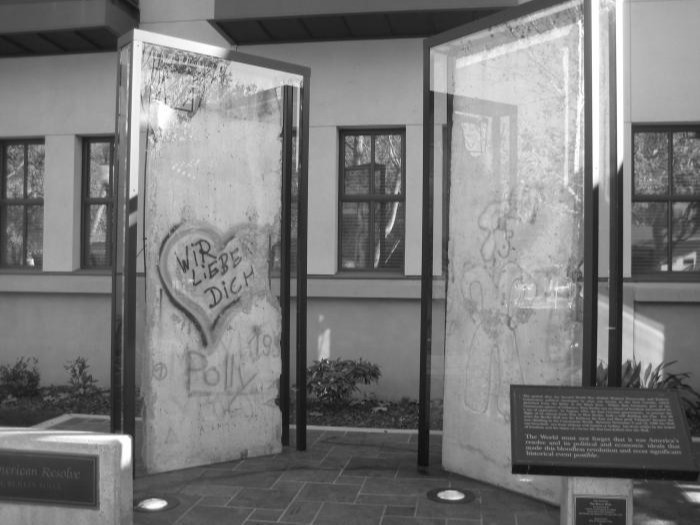Monument Mondays

#MM006 | June 6th, 2022
by Cheyenne Concepcion
Simone Leigh’s Forgone Proposal: AFTER ANARCHA, LUCY, BETSEY, HENRIETTA, LAURE AND ANONYMOUS”
by Cheyenne ConcepcionToday I’m recalling a powerful but forgone monument proposal by Simone Leigh to replace J. Marion Sims in Central Park. Titled, “AFTER ANARCHA, LUCY, BETSEY, HENRIETTA, LAURE AND ANONYMOUS” the 18 foot tall sculpture resembles a black female figure at rest – “a contemporary response to a darth of representation of black beauty in art” says Leigh.
The statue of J. Marion Sims the “father of modern gynecology” was removed from Central Park in 2018 after years of community resistance. Sims, a doctor who made advances in gynecology by performing experimental operations on enslaved women whom he purchased. In 2018, the NYC Public Design Commission voted unanimously to have the statue removed and re-installed in Green-Wood Cemetery where Sims is buried.
Following a public process to select a replacement monument, in October of 2019, Simone Leigh’s proposal “AFTER ANARCHA, LUCY, BETSEY, HENRIETTA, LAURE AND ANONYMOUS” was selected by a panel of public art experts… only to be deferred. Due to discontent by the East Harlem community on this decision, Leigh withdrew her proposal stating, “Since this is a public monument in their neighborhood, I defer to them.” Similarly, the East Harlem community favored artist Vinne Badwell who proposed an 18-foot angel titled “Victory Over Sims” – Bagwell was named winner of the commission shortly after.
I respect Simone Leigh’s decision to defer to community wishes – though this is piece is about harkening back to a proposal unrealized. What stood out to me about Leigh’s work is the anonymity of the monumental black female form’s peaceful interaction with its surrounding landscape – also proposed by Leigh. With this proposal, Leigh uses elements of garden design, by planting a tall holly screen and the periwinkle bluebells like a meadow surrounding the sculpture – pulling the sculpture into the landscape.

#MM005 | May 30th, 2022
by Claire Flanegin
Toppled Twice
(Berlin Wall at the Mountain View Library)
by Claire FlaneginOn a side street in downtown Mountain View in front of the city library, there are two slabs from the Berlin Wall encased in glass to keep from crumbling further. You can see the chunks of concrete missing and the rebar sticking out at odd angles along with graffiti in German and other spray painted characters. It’s not exactly pretty to look at, but it does have the distinct feeling of being ripped from a moment in time.
When we talk about “new monuments”, we’re usually grappling with the idea of reframing history; looking at a well-known event from a different perspective or uncovering new stories altogether. These eight-foot concrete slabs were displayed in a Google office parking lot until they were donated and moved to the city of Mountain View upon the owner’s death- “toppled twice” as one description puts it. The Berlin Wall and its toppling are both significant historical events that are imbued with meaning of their own, but what does it mean to take those pieces of history and display them in a city thousands of miles away?
Preserving something that was taken down transforms that relic. Much like the photographs and preservation of the toppled monuments in the summer of 2020, the visual of something destroyed can tell a story just as much as leaving a statue or a wall intact. Understanding why monuments are demolished, defaced, and reviled can be just as valuable and cathartic as the act itself.

#MM004 | May 23rd, 2022
by Cheyenne Concepcion
Monuments you can Climb on: Meet Balto
by Cheyenne ConcepcionSeeing a toddlers climb atop a Siberian husky monument during my run got me here. The husky’s name is Balto, you probably heard of him, his statue is in Central Park's south-eastern corner. Balto’s heroic journey began during a diphtheria outbreak in Nome, Alaska. With the town in desperate need of vaccines, blizzard conditions and treacherous terrain made a relay-race of dog sleds across 700 miles the only solution. Balto became an international sensation, and “A group of dog-lovers and New Yorkers eager to honor this feat, were successful in raising money and petitioning the City to include a monument to Balto in Central Park.” The monument was sculpted by Frederick Roth who went on to become the head sculptor for New York’s Parks Department from 1934 to 1936. Roth’s portfolio of critters also includes Honey Bear, Mother Goose and Dancing Goat. To me, Balto illustrates how monuments can be both heroic and incredibly cute too…

#MM003 | May 9th, 2022
by Claire Flanegin
Duel Purposes
(the Broderick-Terry Duel Site)
by Claire FlaneginTwo small stone obelisks sit opposite each other in a clearing just outside of San Francisco that commemorate the last duel ever fought in California. Landmarks that you specifically have to go out of your way to find always have a layer of intrigue for me. Obviously the duelists didn’t know that the site of their gun battle would be just off the main road, but you do have to be determined to find this one.
Across the street from Lake Merced, there is an unassuming parking lot backing up into a small Daly City neighborhood. There is a marker next to a gate on the far side of the lot, which is the only indication that there’s actually something to be looked at. Beyond the gate sit the two obelisks representing where California Senator David Broderick and ex-Chief Justice David Terry, of the California Supreme Court, stood in 1859 for their duel. Long story short: Broderick was an abolitionist, Terry was pro-slavery, they exchange some harsh words, decide to duel, Terry kills Broderick.
While the historical event the monument represents is not insignificant, the space it occupies is not dominated by its weight either. The green space around the obelisks is often occupied by people from the neighborhood walking their dogs. Monuments do not have to be the dominant force in their environment— history can be marked unobtrusively with the same reverence.

#MM002 | May 2nd, 2022
by Cheyenne Concepcion
Playgrounds for Monuments
by Cheyenne ConcepcionIn honor of national sculpture day, I want to spotlight one of Noguchi’s lesser known body of works: his playgrounds. I first encountered his playscapes at SFMOMA in 2017. I was in graduate school for landscape architecture, and luckily, the exhibition visit was a mandatory part of the course. I didn’t expect a monumental marble slide maquette to blow my mind, but on that day, it did. Because of that experience, Noguchi’s sculptural allure is always nearby when I think about the future of monuments – why can’t new monuments encourage viewers to play?
Noguchi’s earlier playground designs excluded slides and swings and instead sculpted the landscape to encourage free play. After his proposals were rejected by the New York City Parks Commission in 1934, his earthworks only grew larger and more ambitious. These playground designs are mostly unbuilt yet the artist left behind many admired maquettes of the designs.
One of his built projects, “Slide Mantra” was again presented within a museum setting at the Venice Biennale of 1986. Slide Mantra was carved out of Carrara marble blocks and materially so are most monuments. Slide Mantra is a beautiful example of how public art can be both protruding and playful, which brings me back to my first question – why can’t new monuments encourage viewers to play?

#MM001 | April 25th, 2022
by Claire Flanegin
An Un-Serra-monious Statue
by Claire FlaneginThe haphazardly-made Junipero Serra statue is familiar to anyone who has used Highway 280 as a means to get from the South Bay to San Francisco; one stubby protruding finger pointing accusingly westward, suggesting the movement of the missionaries it represents. In addition to its origins celebrating mass death and colonization, it’s likely the ugliest representation of Serra to exist in California.
Monuments are often so concerned with aesthetics- stately columns, figures on horseback, stoic expressions- that it’s absolutely insane that this statue is as gross to look at as confronting the state’s bloody history. Serra’s likeness was so memorably creepy that my childhood best friend and I had a game we would play every time her mom would shuttle us up to San Francisco in her Volvo: “if he points at you, you’re his wife!!” we would shriek wildly as we ducked for cover in the backseat.
Childhood mythology aside, the statue was designed and financed by a local artist in 1976 where it has been looming over the freeway ever since. Drivers are free to pull off at a rest stop past the statue and hike up to the sometimes-unlocked gate in order to get a better look at Serra’s lumpy face. The massive 26 foot-tall monument sits atop a pedestal with the names of the California missions he established. Local legend has it that the sculptor in charge of applying the plaster to the metal frame did not have specific instructions on how the face should look and instead constructed it to resemble his own face.
Junipero Serra statues throughout the state have been torn down, decapitated, vandalized, and spirited away into storage by city councils for “protection”- so why has this one been immune to public outcry? A quick Google search does return some complaints, but they are mostly limited to calling the likeness “hideous” or “sculpted from mashed potatoes.” There are some claims online of the statue being defaced with paint, but my memories are limited to a foam finger placed on Serra’s outstretched finger and a cape (along with other accessories) appearing overnight on his shoulders.
While the roadside statue of Serra remains as ugly as his legacy, there are no plans to remove the statue so I will still be ducking every time I drive up to San Francisco.